Colombia Flag Meaning
Three horizontal stripes with yellow taking the top half and blue and red each taking a quarter, representing the golden wealth of the land, the seas and rivers, and the blood shed for independence from Spanish rule.
- Continent
- South America
- Adopted
- 1861
- Ratio
- 2:3
- Colors
- yellow, blue, red
- Designer
- Francisco de Miranda (original inspiration)

Symbolism
Yellow Stripe (Double Width): Represents the golden wealth and abundance of Colombia, symbolizing the country's rich natural resources including gold, emeralds, oil, and fertile agricultural lands that have sustained Colombian civilization for centuries.
Blue Stripe: Represents the two oceans that border Colombia (Pacific and Atlantic via the Caribbean), the rivers and waterways that flow through the country, and the clear skies above the diverse Colombian landscape.
Red Stripe: Represents the blood shed by Colombian heroes in the struggle for independence from Spanish colonial rule, symbolizing the courage and sacrifice of those who fought for freedom under Simón Bolívar's leadership.
History
- Pre-1499: The region was home to advanced indigenous civilizations including the Muisca, Tairona, and others, with sophisticated goldworking, agriculture, and trade networks that created the legend of El Dorado.
- 1499-1819: Spanish colonization began with Alonso de Ojeda's expedition, establishing the Viceroyalty of New Granada with Bogotá as capital, extracting vast wealth in gold and emeralds while suppressing indigenous cultures.
- 1810-1819: The independence movement began with the Cry of Independence in Bogotá, followed by years of warfare led by Simón Bolívar and Francisco de Paula Santander against Spanish royal forces.
- 1819-1830: Colombia became part of Gran Colombia under Bolívar's vision, using early versions of the yellow-blue-red tricolor inspired by Francisco de Miranda's revolutionary flag design.
- 1830-1861: After Gran Colombia dissolved, the Republic of New Granada (later Granadine Confederation) used various flag designs while establishing Colombian national identity separate from Venezuela and Ecuador.
- July 26, 1861: The United States of Colombia adopted the current flag design with yellow taking the upper half and blue and red each taking a quarter, establishing the definitive Colombian national symbol.
- 1948-1958: La Violencia, a period of civil conflict between Conservative and Liberal parties, saw the flag represent a nation torn by political violence that killed over 200,000 people.
- 1960s-2016: Armed conflict involving guerrilla groups (FARC, ELN), paramilitary forces, and drug cartels dominated Colombian life, with the flag representing hopes for peace amid decades of violence.
- 2016-Present: The peace agreement with FARC marked the beginning of post-conflict Colombia, with the flag representing national reconciliation and efforts to build lasting peace and development.
Trivia
- Colombia is the world's only country named after Christopher Columbus (Cristóbal Colón in Spanish), honoring the explorer who never actually set foot on Colombian soil.
- The flag represents the world's leading source of emeralds, producing 70-90% of the global supply from mines in the Eastern Cordillera mountains.
- Colombia is the second-most biodiverse country in the world after Brazil, with more bird species than anywhere else on Earth and unique ecosystems from Amazon to Andes to Caribbean coast.
- Colombian coffee is world-renowned for its quality, with the Coffee Cultural Landscape being designated a UNESCO World Heritage Site representing centuries of coffee-growing tradition.
- The flag flies over a country that is the world's largest producer of cocaine, despite government efforts to combat drug trafficking and promote alternative crops.
- Cartagena's colonial walled city is a UNESCO World Heritage Site, representing one of the best-preserved examples of Spanish colonial architecture in the Americas.
- Colombia has both Pacific and Caribbean coastlines, making it one of only a few South American countries with access to two different oceans.
- The country has produced internationally acclaimed writers including Nobel Prize winner Gabriel García Márquez, whose magical realism captured Colombian culture and history.
- Medellín, once known as one of the world's most dangerous cities due to drug cartel violence, has transformed into a model of urban innovation and development.
- Colombia is home to the world's tallest palm trees (Quindío wax palms) and the only desert in South America that borders the Caribbean Sea (La Guajira Desert).
- The flag represents a country where salsa, cumbia, and vallenato music originated, with these genres becoming popular throughout Latin America and beyond.
- Bogotá, the capital, sits at 2,640 meters above sea level, making it one of the world's highest capital cities and giving it a unique cool climate despite its tropical latitude.
- Colombia has over 60 national parks protecting diverse ecosystems from páramo (high-altitude ecosystems) to Amazon rainforest to coral reefs.
- The country is a major flower exporter, particularly of roses and carnations, with flower farms in the Sabana de Bogotá supplying markets worldwide.
- Colombian cuisine varies dramatically by region, from bandeja paisa in Antioquia to sancocho on the coast, reflecting the country's geographic and cultural diversity.
Related Countries

Ecuador
South America
Three horizontal stripes with yellow taking the top half and blue and red each taking a quarter, featuring the national coat of arms in the center, representing the abundance of the land, the sky and ocean, and the blood shed for independence.
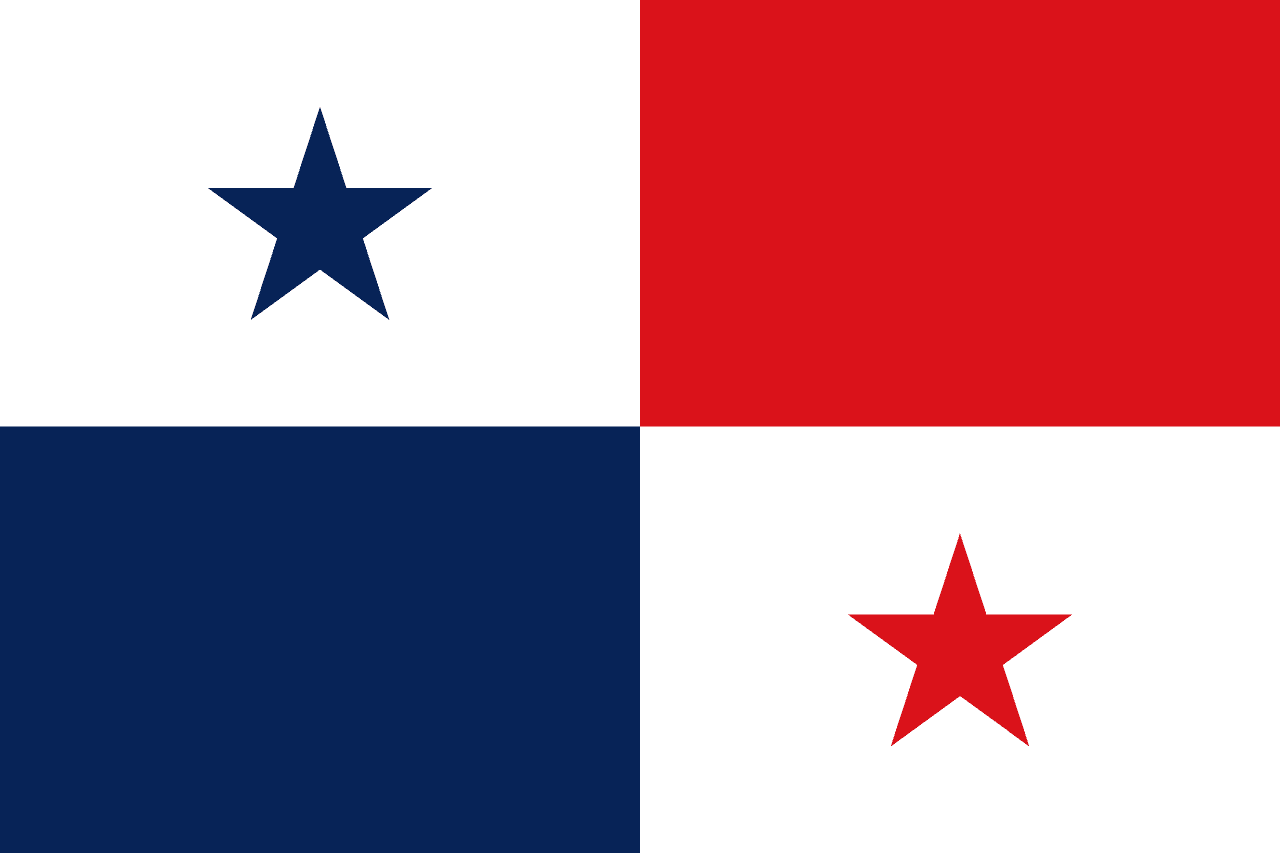
Panama
North America
Quartered flag with white and blue star in top left, red in top right, blue in bottom left, and white with red star in bottom right. The design symbolizes political balance and the ideals of peace and progress.
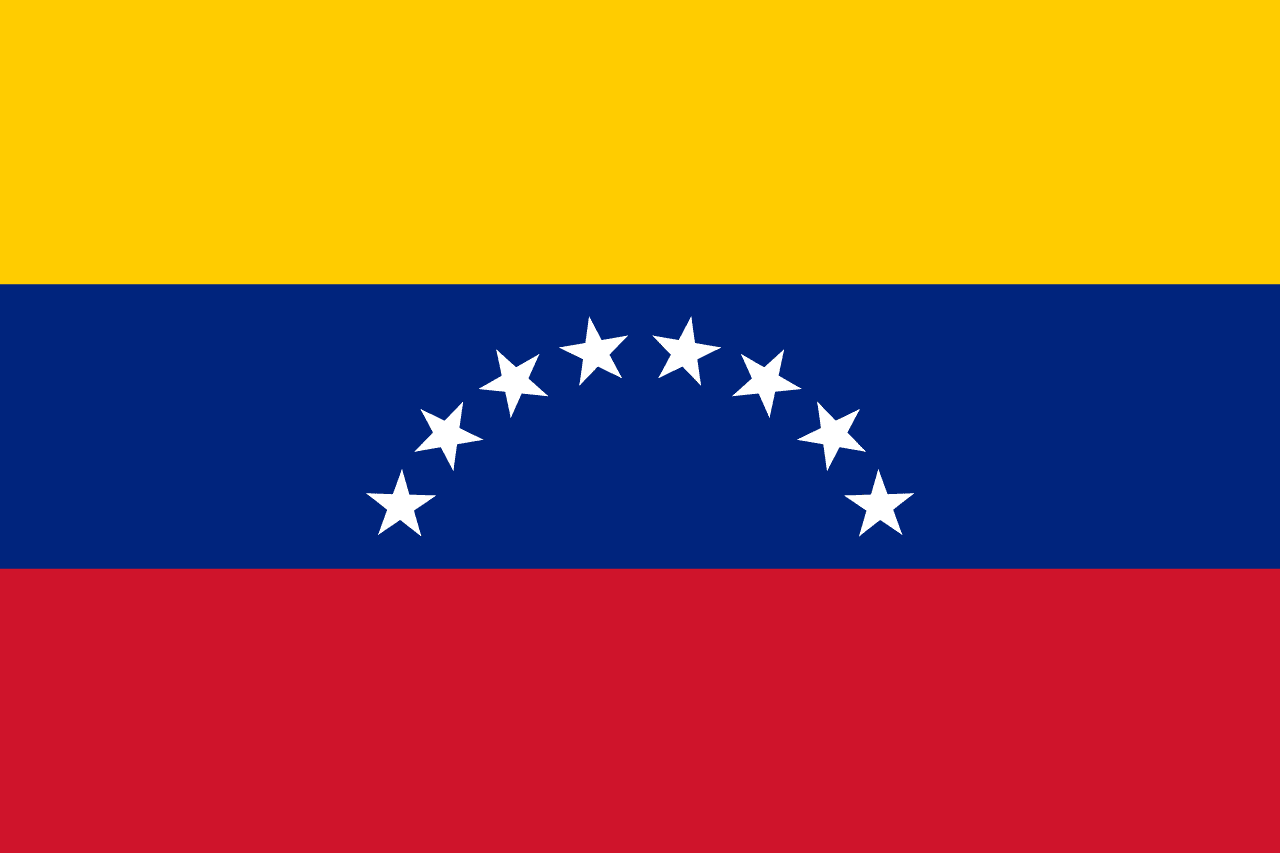
Venezuela
South America
Three horizontal stripes of yellow, blue, and red with eight white stars in an arc on the blue stripe and the coat of arms on the upper hoist corner, representing the wealth of the land, the seas separating Venezuela from Spain, the blood shed for independence, and the eight original provinces that declared independence.
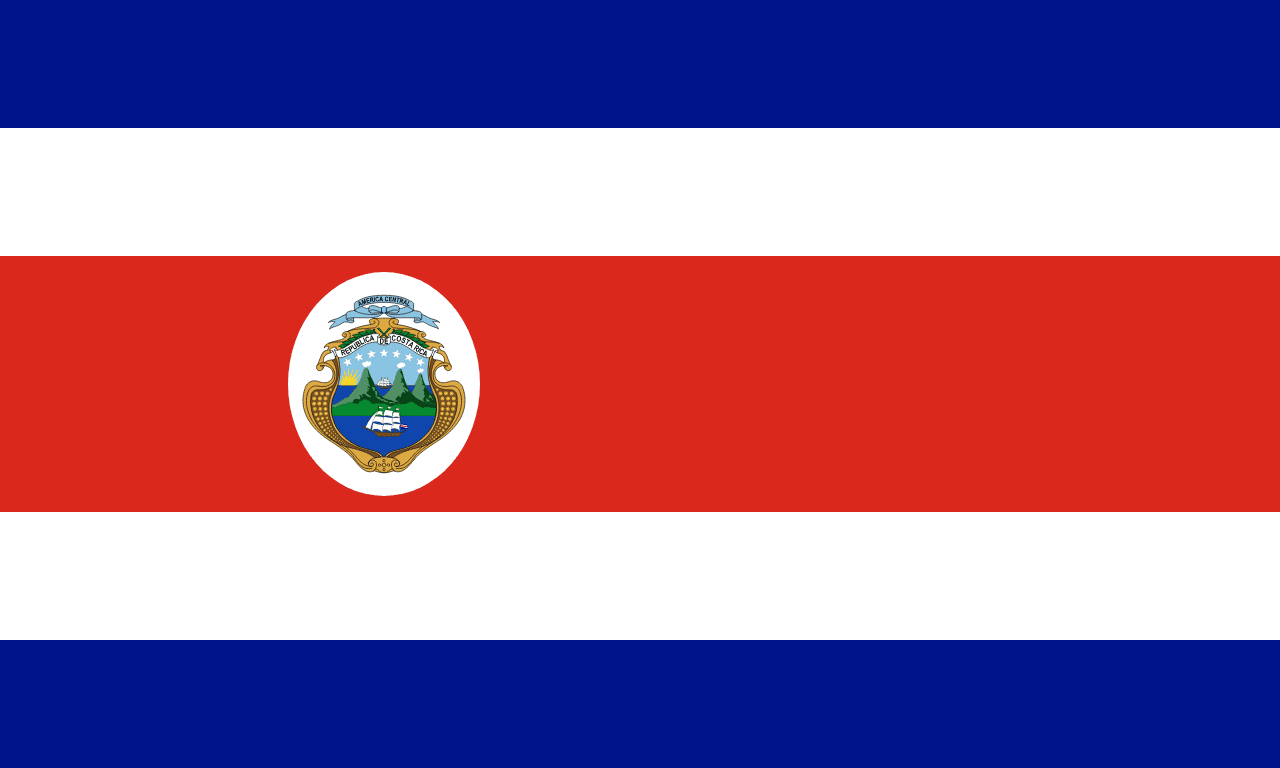
Costa Rica
North America
Five horizontal stripes with blue at top and bottom, white stripes below and above the central red stripe, and the national coat of arms on the red stripe, representing the sky and opportunities, peace, and the warmth of the Costa Rican people.
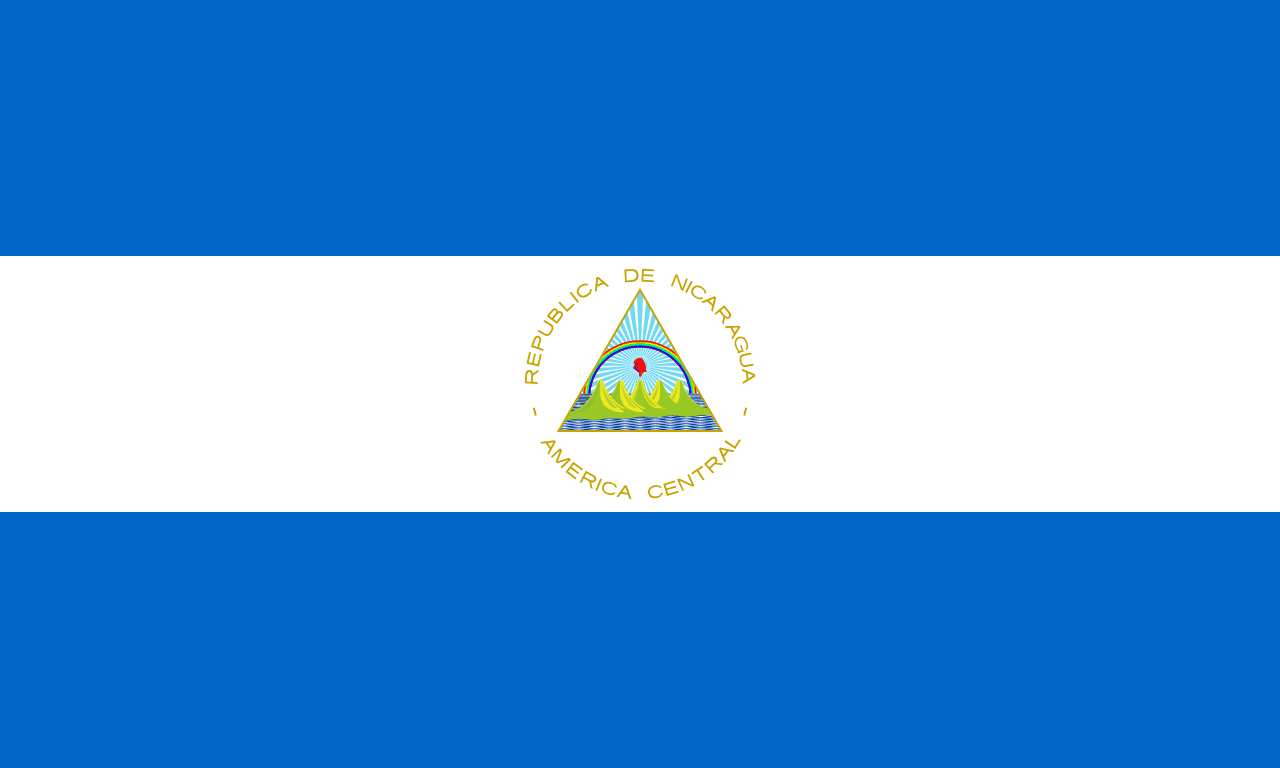
Nicaragua
North America
Three horizontal stripes of blue, white, and blue with the national coat of arms centered on the white stripe, representing Nicaragua's position between two oceans and its revolutionary ideals of liberty and peace.
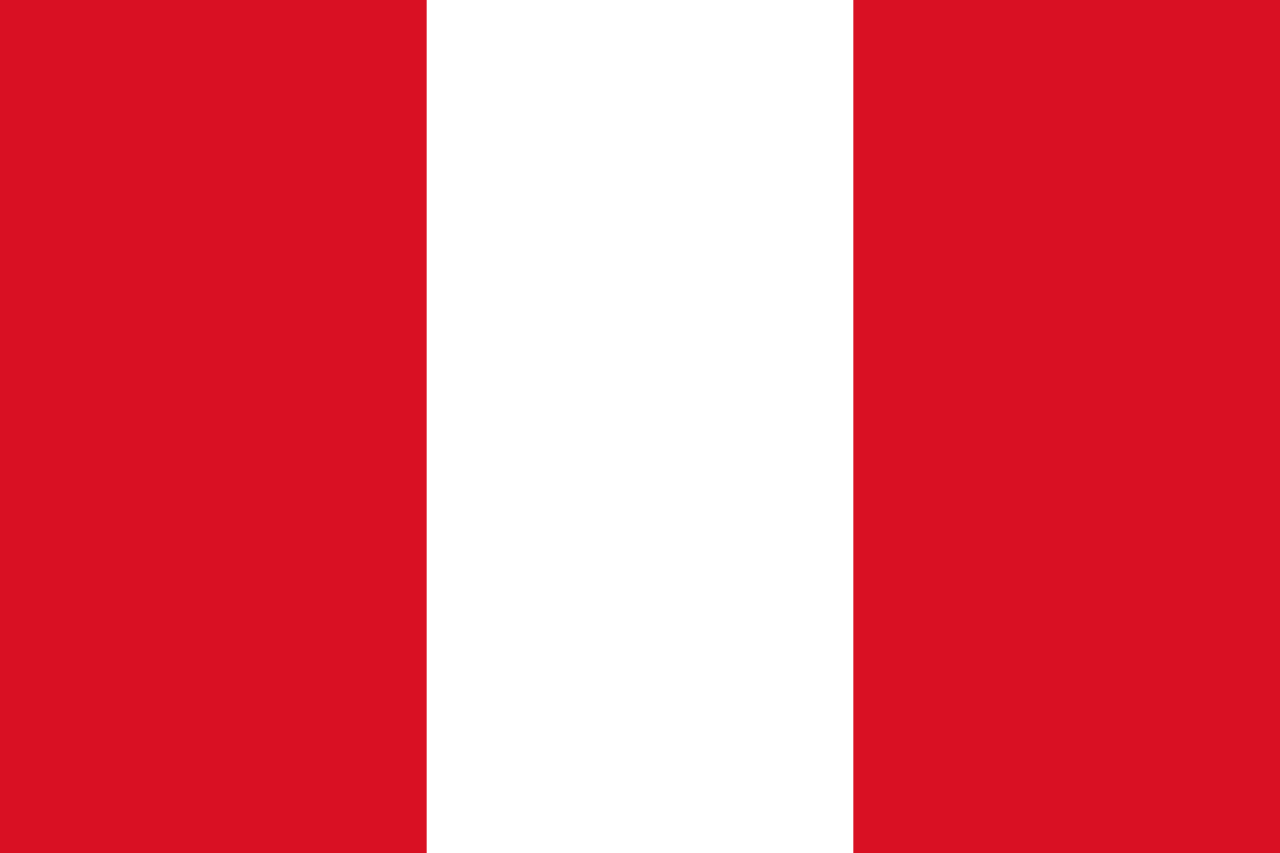
Peru
South America
A vertical triband of red, white, and red. The civil flag is a simple triband, while the state flag includes the national coat of arms in the center white band. The design reflects Peru’s struggle for independence and its natural richness.